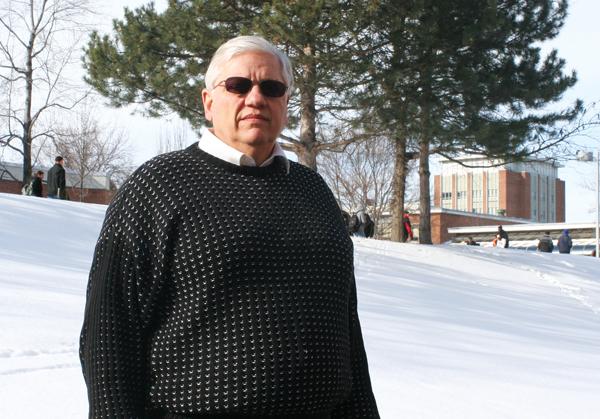
As revolutionary protests continue throughout Egypt and northern Africa, a predictive model designed by a Binghamton University professor may be able to bring some level of understanding to the chaos of the past few days.
Dissatisfied Egyptian citizens took to the streets on Jan. 25 in Cairo’s Tahiri Square to overthrow the government of current President Hosni Mubarak. According to a model developed by BU political science professor David Cingranelli and two political science assistant professors from Kansas State University, these types of riots can be accurately predicted and, they say, even prevented.
“Some of the results our study showed were unsettling; certain types of human rights violations caused an increase in violence against the state,” Cingranelli said.
The model was developed by Cingranelli and KSU professors Sam Bell and Amanda Murdie, and was able to successfully predict political outbreaks and civil unrest in Peru, Ireland, Ecuador and Italy, and most recently the riots in Tunisia.
Bell said the project initially began in 2008 at BU, where as a graduate student he was asked by Cingranelli to help develop the model. The two then recruited Murdie.
“We all worked on all aspects of the project together. We compiled the data sets, ran analyses to build a predictive model, then used that model for generating a risk assessment forecast,” Bell said.
Murdie commented on some of the more insightful elements of the model.
“It was interesting that Internet access helped people coordinate riots,” Murdie said. “This relates it back to events happening in the world right now.”
In response to Friday’s riots, the Egyptian government shut down the country’s mobile phone and Internet services, crippling the opportunities for communication for anti-government protesters.
This act was to stop a specific trend that is referred to in the field as the “YouTube and Twitter Effect,” the theory that the more people who are connected to the world, the greater the probability of violence by protesters.
Cingranelli said the model shows that a government that uses violence against its citizens is more likely to incite the population to rebel.
“If [the government] can’t change peacefully, the [citizens] will use violence against the government,” Cingranelli said.
But, he said, there were still other findings that were particularly startling.
“I was a bit surprised to find that, other things equal, government repression of free speech (by limiting access to cell phones and Internet) was an effective strategy for reducing violence against the state,” he said. “And to be honest, I’m bothered by the policy implications of that finding.”
Cingranelli has been a part of the faculty at Binghamton since the late 1970s, in addition to being the former president of the human rights section of the American Political Science Association. He has dedicated his life’s research to studying the correlation between human rights and government ruling as co-director of the Cingranelli and Richards (CIRI) Human Rights Data Project, the precursor to his current model, the “Predictive Societal Indicators of Radicalism Model of Domestic Political Violence Forecast.” Many of the statistics compiled through the project were used in the new model Cingranelli has helped develop.
The purpose of the Human Rights Data Project is to provide information for scholars and students who seek to test theories about the causes and consequences of human rights violations. The organization, which can be found online at ciri.binghamton.edu, observes 15 internationally recognized human rights criteria across 195 countries, data that has been collected annually since 1981 by the U.S. Department of State. The website also observes a wide variety of institutional changes and public policies including democratization, economic aid, military aid, structural adjustment and humanitarian intervention.
“[Our goal was] to organize the best ways to measure all of the data from public resources,” Cingranelli said.
BU students in the classes Cingranelli teaches have also been able to help in the research. Through his human rights research seminar, students helped collect and evaluate human rights and labor reading reports. The combined research over the last decade of the class has contributed to the new model.
Another trend Cingranelli noticed in his research was that the stronger the military is, the less likely political violence will occur.
According to Cingranelli, the element of democracy was shown to be the most dangerous to the state, and the reason riots are uncommon in the United States is that the government is relatively strong.
The model was originally created and developed for Milcord, an Open Innovation company that builds knowledge management solutions for federal agencies.
“What we hope is that this research will improve international security and create interdisciplinary programs,” Bell said.
— Information from the Associated Press was used in this report


